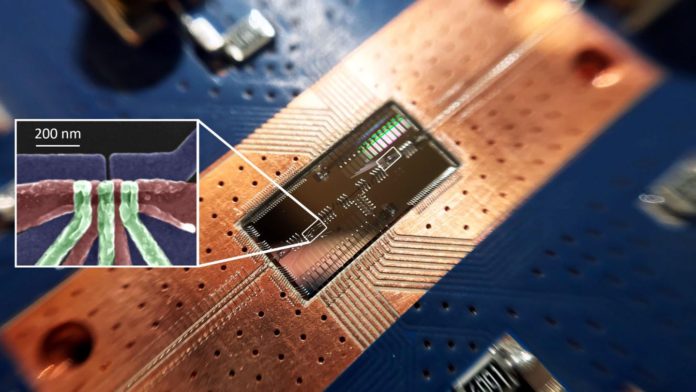
Quite possible, thanks to a group of Princeton scientists. While scientists have been delving into the world of quantum computing for quite some time now, because of its complex nature, we’re still not as far forward as we’d hoped for. One of the reasons for this is up until now, the hardware that’s used to make up a silicon quantum computer has been limited in the distance in which it can communicate across. However, researchers at Princeton University have been working hard at trying to solve this problem, and alas, may have just discovered a solution.
The new study, published in the journal, Nature, demonstrates how two silicon “spin” qubits are able to interact with one another even when placed apart on a computer chip. Being able to transmit messages across this distance on a silicon chip is a pretty amazing accomplishment and one that enables a whole new wave of quantum capabilities. According to

at Princeton and lead author of the study, “the eventual goal is to have multiple quantum bits arranged in a two-dimensional grid that can perform even more complex calculations,”. And this study should help do just that by improving the communication of qubits both on a single chip and from one to another.
Quantum computers are amazing machines that can carry out complex equations and perform factoring of numbers far bigger than any classical computer known to man. In addition to that, a quantum bit (qubit) has the ability to represent a range of simultaneous values between 0 and 1, whereas with a classical computer it must be one or the other. The problem is that in order to work effectively these advanced computers will need thousands upon thousands of qubits all communicating with one another. So far, companies such as IBM and Google have superconducting circuits of less than 10 qubits.
Silicon spin qubits, on the other hand, are showing much more promise and have several advantages over superconducting qubits. Their quantum state is retained for longer, and because silicone is so widely available, the cost of manufacturing the qubits would be lower too. The tricky part is that they’re so incredibly small, making them quite difficult to work with. However, Petta’s team has done well in helping to prove that it can be done by connecting qubits located about half a centimeter apart. To do this the team had to first get the qubits and photon to communicate in the same language by setting all to vibrate at the same frequency. In doing so they managed to tune both qubits individually, at the same time as being coupled to the photon.
A double quantum dot is a name given to the tiny chamber of a qubit which traps inside it a single electron. When the electron is blasted with a microwave field, the spin can be flipped, and the quantum state changed from that of a 1 to 0 or vice versa. “This is the first demonstration of entangling electron spins in silicon separated by distances much larger than the devices housing those spins,” stated senior scientist at HRL Laboratories and one of the collaborators on the project, Thaddeus Ladd. Researchers were previously under the impression that this would never happen because of the “conflicting requirements of coupling spins to microwaves and avoiding the effects of noisy charges moving in silicon-based devices”, he continued. But, the team persevered and succeeded.
This kind of research builds upon previous work carried out by the Petta team back in 2010 where they demonstrated how it is possible to contain single electrons within quantum wells. In 2012, the team announced the transferring of quantum information from nanowires’ electron spins to microwave-frequency photons. 2016 saw the team demonstrate near-neighbor trading of data in qubits. While in 2018, they showed the exchanging of information from a silicon spin qubit to that of a photon.
